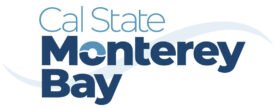Web Development
Brief History
1. The Static Web (1990s)
-
The early web was made up of static HTML pages—simple documents without interactivity.
-
Websites were hand-coded using HTML and later CSS for basic styling.
-
JavaScript emerged in the mid-1990s to add dynamic behavior (like button clicks or animations).
2. Dynamic Websites & CMS Era (2000s)
-
Server-side languages like PHP, ASP.NET, and Java enabled dynamic content—websites could now fetch and display data from databases.
-
Content Management Systems (CMS) like WordPress, Joomla, and Drupal allowed non-developers to build websites easily.
-
AJAX enabled asynchronous content loading, improving user experience.
3. Modern Web & Frameworks (2010s)
-
JavaScript frameworks like React, Angular, and Vue.js revolutionized front-end development.
-
Responsive design became standard with mobile-first websites.
-
Backend technologies evolved with Node.js, Django, Laravel, and Ruby on Rails.
-
APIs (especially REST and GraphQL) became the backbone of data communication.
4. The Jamstack & Headless Web (2020s – Present)
-
The web shifted toward Jamstack architecture: JavaScript, APIs, and Markup.
-
Headless CMSs like Strapi and Contentful separated content management from the frontend.
-
Hosting and deployment became easier and faster with Netlify, Vercel, and Cloudflare Pages.
-
Low-code/no-code tools and site builders (e.g., Webflow, Wix, Squarespace) gained popularity.
-
Emphasis on performance, accessibility, and SEO best practices became key.
WordPress: The Leading CMS
WordPress powers over 40% of all websites on the internet today. It began as a blogging platform in 2003 but has since grown into a full-featured CMS that can power:
-
Blogs and personal websites
-
Business sites and portfolios
-
Online stores (via WooCommerce)
-
Membership and e-learning platforms
Why Use WordPress?
-
Beginner-friendly, no coding required
-
Thousands of free and premium themes
-
Extensive plugin ecosystem (for SEO, security, performance)
-
Strong community and documentation
Whether you’re building your first site or managing dozens, WordPress scales with your needs.
YouTube Recommendation
While, I could have coded this website from scratch with either react native or flutter, since they both have web versions. It would have taken me several weeks. This website was made through WordPress. WordPress is a free software that allows one to make a website without any coding. This is the video that I used in order make this site.
